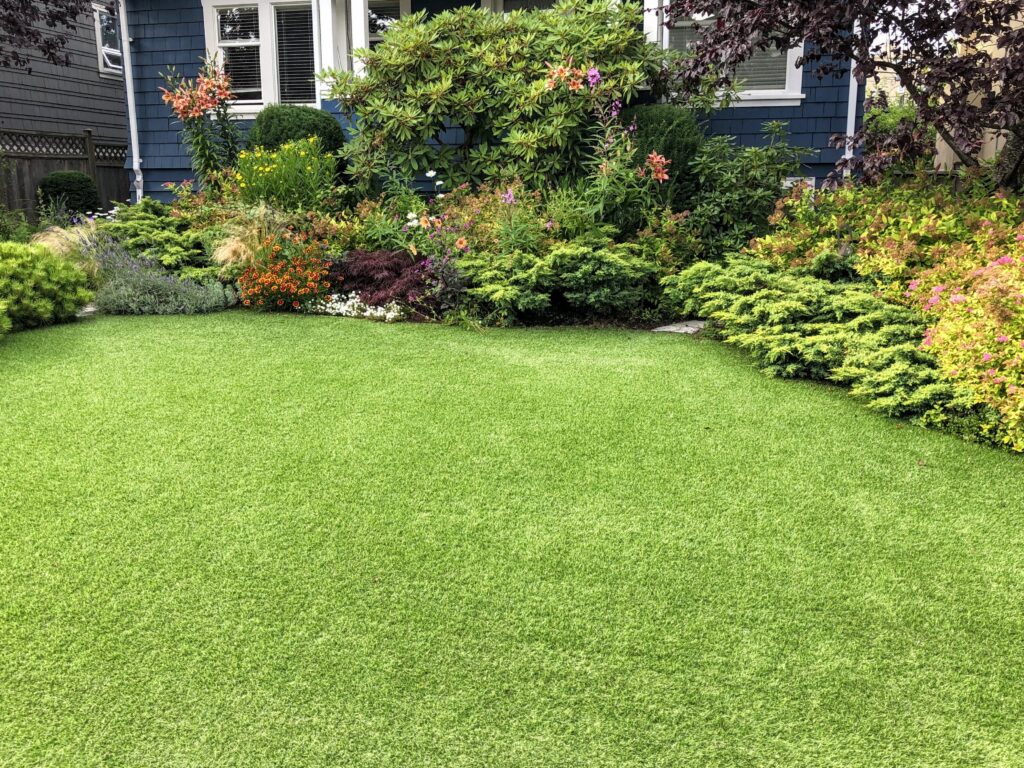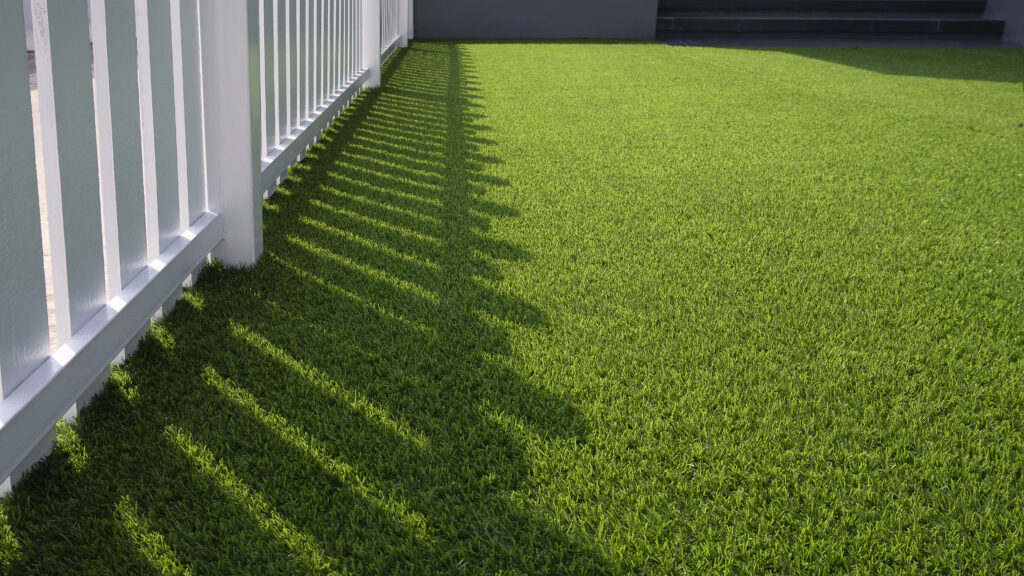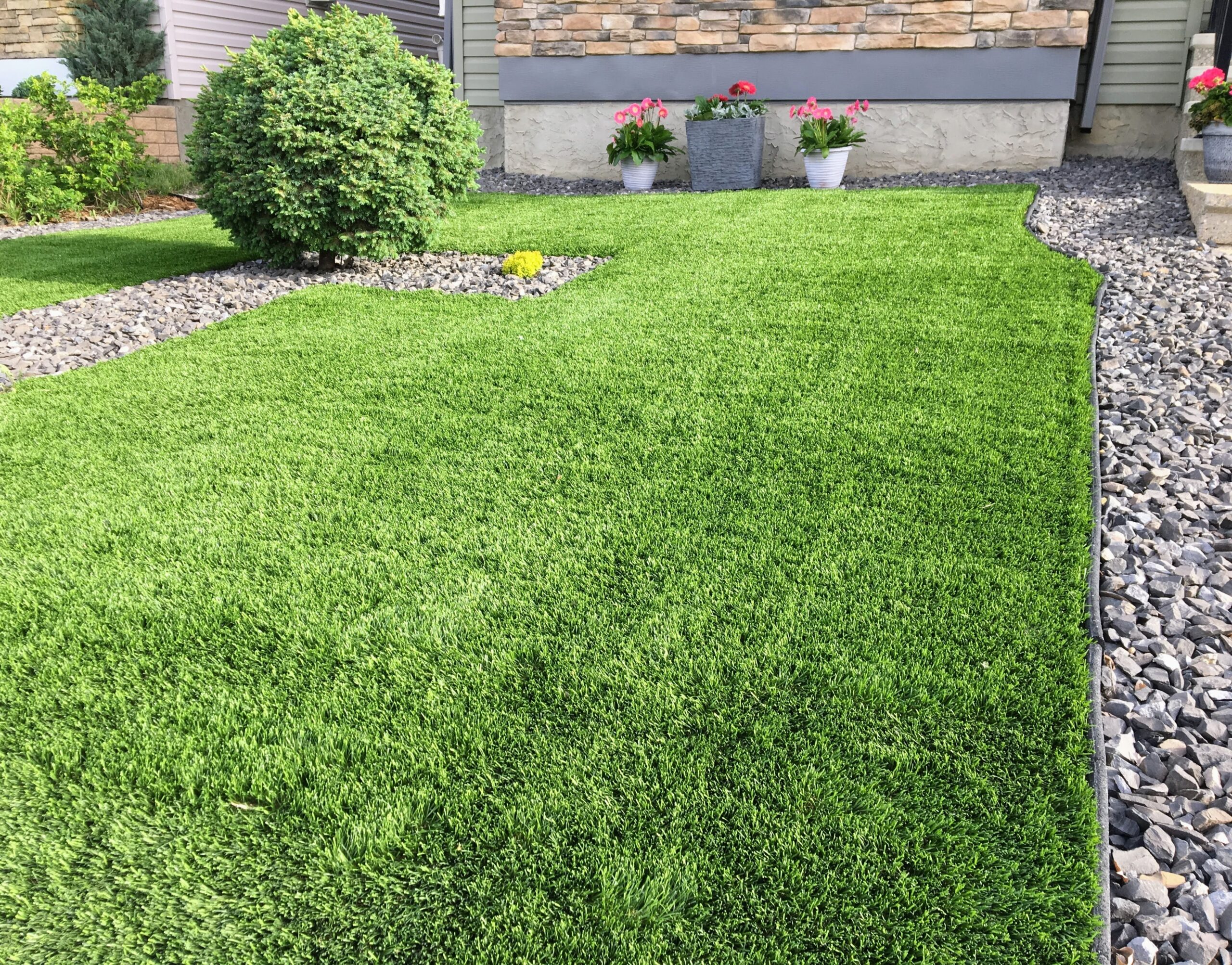Introduction
Artificial turf, also known as synthetic grass, has evolved significantly since its first major athletic field application in the 1960s. Today, it’s not just for sports fields anymore. Homeowners and businesses in Massachusetts are turning to artificial turf for its convenience, durability, and aesthetic appeal. If you’re considering artificial turf for your outdoor space, here’s what you need to know in a nutshell:
– Artifical Turf Basics: Made from synthetic fibers to mimic the look and feel of natural grass.
– Evolution: It has come a long way in terms of technology and materials, making it more durable and realistic than ever.
– Synthetic Fibers: These fibers are designed to withstand heavy traffic, extreme weather, and minimal maintenance.
Artificial turf offers a lush, green lawn without the water requirements, mowing, and maintenance associated with natural grass. Its evolution includes improvements in safety, comfort, and environmental impact. The synthetic fibers used today are not only softer and safer but also come in various types tailored for specific needs, such as pet-friendly and eco-friendly options.
Whether you are struggling with growing natural grass in Massachusetts’ challenging climate or simply seeking a low-maintenance landscaping solution, artificial turf could be the perfect fit for your needs.

Cost Comparison: Artificial Turf vs. Natural Grass
When considering landscaping options, the cost is a significant factor. Let’s break down the cost comparison between artificial turf grass and natural grass, focusing on installation costs, maintenance savings, and long-term investment.
Installation Costs
The initial cost of installing artificial turf can seem steep. For an average yard, installation costs can range between $5 to $20 per square foot. This means, for a space of about 960 square feet, the price may vary from $4,800 to $19,200. Natural grass, on the other hand, can be significantly cheaper to install, often costing a fraction of artificial turf. However, the story doesn’t end here.
Maintenance Savings
Over time, artificial turf proves its value in maintenance savings. Unlike natural grass, it doesn’t require watering, mowing, or fertilizing. Considering that the average American family uses about 320 gallons of water daily, with about 30% dedicated to outdoor use, the water-saving aspect alone can be substantial.
Natural grass maintenance can cost homeowners $100 to $200 monthly during the growing season. In contrast, artificial turf requires minimal upkeep, primarily consisting of occasional brushing and rinsing. Over a decade, these savings can add up, offsetting the initial installation costs.
Long-term Investment
Artificial turf grass has an expected lifespan of about 10 to 15 years, making it a long-term investment. The best artificial turfs come with warranties that offer 100% coverage for the first eight years, with partial coverage extending beyond that.
Over the lifespan of artificial turf, the cost per year can be significantly lower when factoring in the absence of ongoing maintenance expenses associated with natural grass. Additionally, artificial turf can enhance property value and curb appeal, offering lush, green landscaping year-round without the seasonal or drought-related challenges that natural grass faces.
In Massachusetts, where drought conditions persist, artificial turf becomes an even more attractive option. The consistent appearance and low maintenance requirements appeal to homeowners looking for sustainable and practical landscaping solutions.
In conclusion, while the upfront cost of artificial turf might be higher than natural grass, the long-term savings on maintenance, water usage, and the potential to increase property value make it a worthwhile investment. For those considering artificial turf, JM Mento Landscape Design provides professional installation services, ensuring that your investment pays off in the long run.
Choosing between artificial turf and natural grass depends on individual preferences, usage, and long-term landscaping goals. However, for those prioritizing ease of maintenance, sustainability, and cost-effectiveness over time, artificial turf grass emerges as a compelling choice.
For more detailed insights, visit this Quora discussion on the pros and cons of artificial vs. natural grass.
Moving forward, let’s delve into the types of artificial turf grass available, catering to various needs and preferences, from residential to sports fields and pet-friendly options.
Types of Artificial Turf Grass
When you’re considering artificial turf grass, know that you have options. Lots of them. From your backyard to a large sports complex, and even areas for your furry friends, there’s a type of turf for every need. Let’s break down these types into four main categories: Residential, Sports fields, Pet-friendly, and Eco-friendly options.
Residential Artificial Turf Grass
Residential turf is all about making your home look sharp with minimal maintenance. This type of turf is soft, safe, and aesthetically pleasing, designed to mimic the look and feel of natural grass as closely as possible. It’s perfect for lawns, patios, and playground areas where kids and families spend a lot of time. It’s also durable enough to handle backyard BBQs and other home entertainment activities.
Sports Fields Artificial Turf Grass
Sports turf has to be tough. It’s engineered for high durability and optimal performance. This turf is used in soccer fields, football stadiums, baseball fields, and golf courses. It can handle intense foot traffic and all kinds of weather conditions without getting muddy or worn down. Plus, it provides consistent playing conditions year-round, which is something natural grass can struggle with.
Pet-friendly Artificial Turf Grass
Pet owners, rejoice! There’s a turf for your furry friends that’s designed to withstand rough play and is easy to clean. Pet-friendly turf usually has good drainage systems to handle… well, you know. It’s also made of materials that are safe and non-toxic for animals, ensuring that your pets can run, play, and do their business without you worrying about their health or the state of your yard.
Eco-friendly Options
For those conscious about their environmental footprint, there are eco-friendly turf options made from recycled materials and designed to be fully recyclable at the end of their life cycle. These turfs often use infill made from organic or recycled products and are manufactured in a way that reduces carbon emissions. While artificial turf itself is a subject of environmental debate, these options aim to mitigate some of the concerns related to water usage and chemical treatments associated with natural lawns.
Each of these types of artificial turf grass comes with its own set of benefits, catering to different needs and preferences. Whether you’re looking for a low-maintenance lawn that always looks manicured, a durable surface for sports, a safe play area for pets, or an eco-friendly landscaping solution, there’s an artificial turf option out there for you.
Understanding the installation process of artificial turf grass will help you make informed decisions about incorporating it into your space. Let’s dive into that next.
For an in-depth look at the environmental and technological advancements in artificial turf, check out this article on Wikipedia.
Installation Process of Artificial Turf Grass
When you decide to go for artificial turf grass, knowing what the installation involves can be super handy. It’s like building a cake layer by layer — you need the right base and method to get it perfect. Here’s a quick guide to getting your artificial turf laid out, looking good, and lasting long.
Preparation
First things first, you’ve got to prep your area. This means clearing out any existing grass, weeds, or debris. It’s like setting up a blank canvas for your masterpiece. You’d be surprised how much stuff is hiding in your lawn once you start digging in. Getting down to bare dirt is key.
Base Construction
Next up, building the base. This step is crucial because it ensures your turf stays even and drains well, avoiding any unwanted pools or dips. You’ll need to lay down a layer of crushed stone or gravel and compact it. Think of it as creating a firm mattress for the turf to lie on. This base acts like a sponge, draining away water and keeping things level.
Laying Turf
Now for the fun part — rolling out the artificial turf. It’s like unrolling a giant carpet across your yard. You’ll need to trim edges, make precise cuts around obstacles, and ensure all pieces fit snugly together. No wrinkles or folds allowed! It’s all about precision, ensuring each strip of turf lines up perfectly for a seamless look.
Finishing Touches
The last step is about securing and making your turf look its best. This involves pinning down the edges, brushing up the fibers to fluff them up, and adding infill. The infill helps weigh down the turf, keeps the fibers standing tall, and adds a bit of cushioning. It’s like adding sprinkles on your cake — it might not seem essential, but it makes all the difference.
Each of these steps is vital to ensure your artificial turf grass looks great, lasts long, and needs minimal upkeep. Plus, getting it right the first time saves you a lot of headaches later on. Good preparation and quality materials make all the difference. And once it’s all set, you can sit back, relax, and enjoy your green, maintenance-free lawn all year round.
As we’ve seen, the installation process is pretty straightforward but requires attention to detail. Moving on, let’s explore the maintenance and care for artificial turf grass to keep it looking its best for years to come.

Maintenance and Care for Artificial Turf Grass
Cleaning
Keeping your artificial turf grass looking spick and span is easier than you might think. A simple rinse with water can do wonders, especially if your lawn isn’t heavily used. This washes away dust and small debris. For tougher stains or spills, a mixture of water and mild household detergent should do the trick. Just remember to rinse off any soap thoroughly to avoid residue.
Brushing
Just like your hair needs combing, your artificial turf grass benefits from regular brushing. Use a soft-bristle brush or a broom to gently fluff up the fibers, especially in high-traffic areas where they might get matted down. This helps keep the turf looking full and natural. Aim to brush your turf every month or so, depending on use.
Infill Maintenance
Infill plays a crucial role in keeping your artificial turf grass blades standing tall and looking lush. Over time, the infill can get compacted or displaced, so it’s important to check it periodically. If it seems compacted, gently rake or brush the turf to redistribute or loosen the infill. You might need to add more infill material every couple of years to maintain the turf’s appearance and functionality.
Pet Waste Management
For pet owners, artificial turf grass is a blessing, making it easy to handle pet waste. Solid waste can be picked up and disposed of as usual. For urine or any residual smell, rinsing the area with water works well. For more stubborn odors, a vinegar and water solution can neutralize smells without damaging the turf. Also, consider using a turf deodorizer designed for pet odors to keep your lawn fresh.
Remember, while artificial turf grass cuts down on maintenance, it doesn’t completely eliminate it. By following these simple care steps, you can extend the life of your artificial turf and enjoy a beautiful, green lawn without the hassle of constant upkeep.
As we consider the environmental impact and sustainability of artificial turf grass next, keep in mind that proper maintenance not only keeps your lawn looking great but also contributes to its longevity and reduces the need for replacement.
Environmental Impact and Sustainability
When it comes to artificial turf grass, understanding its environmental impact and sustainability is crucial. Let’s break this down into key areas: water conservation, heat issues, runoff and permeability, and recycling challenges.
Water Conservation
One of the major benefits of artificial turf grass is its ability to conserve water. Unlike natural grass, it doesn’t require regular watering to maintain its green and lush appearance. This is especially important in regions where water is scarce or where restrictions on water use are in place. By choosing artificial turf, homeowners and communities can significantly reduce their water usage. However, it’s important to note that while artificial turf conserves water, people and irrigation systems often waste water, not the natural grass itself.
Heat Issues
Artificial turf can get quite hot, especially during the summer months. This is because the materials used in artificial turf, such as rubber and plastic, absorb and retain heat. To mitigate this, it’s recommended to install cooling infills or to water the turf occasionally to reduce surface temperature. While watering artificial turf for cooling seems counterintuitive to water conservation, it’s typically much less frequent than watering natural grass.
Runoff and Permeability
Runoff and permeability are important considerations when it comes to the environmental impact of artificial turf. Proper installation can help ensure that artificial turf has adequate drainage, reducing runoff. However, concerns have been raised about microplastics from artificial turf entering waterways. Studies in European countries have identified artificial sports fields as significant contributors to microplastic pollution in waterways . Addressing this issue requires awareness and action, including considering the use of more eco-friendly infill options.
Recycling Challenges
The disposal and recycling of artificial turf pose significant challenges. As artificial turf reaches the end of its lifespan, recycling the materials can be difficult. The synthetic fibers and infill materials used in artificial turf are not always easily recyclable, leading to concerns about artificial turf contributing to landfill waste. While efforts are being made to improve the recyclability of artificial turf, it remains a work in progress.
In summary, while artificial turf grass offers benefits like water conservation and low maintenance, be mindful of its environmental impact. Heat issues, runoff and permeability, and recycling challenges are important factors to consider. By staying informed and choosing eco-friendly options where possible, we can enjoy the benefits of artificial turf while minimizing its environmental footprint.
As we move on to address frequently asked questions about artificial turf grass, keep these environmental considerations in mind.
Frequently Asked Questions about Artificial Turf Grass
Artificial turf grass has grown in popularity, but with that growth come questions about its safety, durability, and impact on home value. Let’s dive into some of the most common queries.
Is Artificial Turf Safe for Pets and Children?
Safety is a top priority for homeowners, especially those with pets and young children. Fortunately, modern artificial turf is designed with safety in mind. The materials used are non-toxic, ensuring that they are safe for both pets and children to play on. Furthermore, the lack of need for pesticides or fertilizers, which are often required to maintain natural grass, means that there’s no risk of exposure to potentially harmful chemicals. Additionally, many artificial turfs are now made to include UV reflective technology, which keeps the surface cooler and more comfortable for play .
How Long Does Artificial Turf Last?
Durability is another significant advantage of artificial turf grass. When properly installed and maintained, artificial turf can last up to 30 years. This longevity means that, although the initial investment might be higher than that of natural grass, the cost over time can be much lower. The key to maximizing the lifespan of your artificial turf is proper maintenance, which includes regular brushing and prompt attention to any spills or stains. Leading manufacturers often back their products with long-term warranties, further ensuring the value of your investment .
Can Artificial Turf Increase Home Value?
Yes, it can. Artificial turf grass can be a smart investment for homeowners looking to increase their property’s curb appeal and overall value. A well-maintained artificial lawn provides a lush, green appearance year-round, enhancing the aesthetic appeal of your home. This can be especially appealing in regions prone to drought or where water restrictions make it difficult to maintain natural grass. Additionally, the low maintenance requirements of artificial turf make it an attractive feature for potential buyers who may be looking for a beautiful yet easy-to-care-for yard. Real estate experts suggest that homes with artificial turf can see an increase in value, making it a worthwhile investment for the future.
In conclusion, artificial turf grass offers numerous benefits, including safety for pets and children, durability, and potential to increase home value. By choosing the right product and ensuring proper installation and maintenance, homeowners can enjoy these benefits for many years to come.
Conclusion
When we consider the journey we’ve taken through artificial turf grass, it’s clear that this modern landscaping solution presents a compelling alternative to natural grass. From its low maintenance requirements to its long-lasting durability, artificial turf grass stands out as a practical and attractive option for various applications.
Benefits of Choosing Artificial Turf Grass
Choosing artificial turf grass for your home or project comes with a plethora of benefits. Here are some of the key advantages:
- Water Conservation: Artificial turf grass requires no watering, saving significant amounts of water each year. This is not only good for the environment but also reduces your utility bills.
- Durability: Designed to withstand heavy use and extreme weather conditions, artificial turf remains lush and green year-round, without the need for reseeding or mowing.
- Low Maintenance: Say goodbye to weekends spent mowing, weeding, and fertilizing. Artificial turf requires minimal upkeep, freeing up your time for more enjoyable activities.
- Eco-Friendly Options: With advancements in recyclable materials and infill, choosing eco-friendly artificial turf options has become easier, contributing to a reduction in your carbon footprint.

At JM Mento Landscape Design, we understand the importance of creating spaces that are not only beautiful but also sustainable and easy to maintain. Our expertise in artificial grass installation ensures that every project is tailored to meet our clients’ specific needs and preferences. From the initial design to the final installation, our team is dedicated to transforming your vision into reality.
Whether you’re looking to create a safe play area for children and pets, design a drought-tolerant landscape, or simply enjoy the look of a perfectly manicured lawn without the hassle, artificial turf grass offers a versatile and sustainable solution. With JM Mento Landscape Design, you have a partner committed to excellence and customer satisfaction.
Discover how we can bring your landscaping dreams to life with artificial turf grass. Explore our artificial grass installation services and let us help you create a space that you’ll love for years to come.
Choosing artificial turf grass is not just about enhancing the aesthetic appeal of your space; it’s about making a smart, sustainable choice that benefits both you and the environment. Let JM Mento Landscape Design guide you through the process, ensuring a result that exceeds your expectations.
Thank you for considering artificial turf grass as a viable, attractive option for your landscaping needs. Together, we can create beautiful, sustainable spaces that stand the test of time.






0 Comments